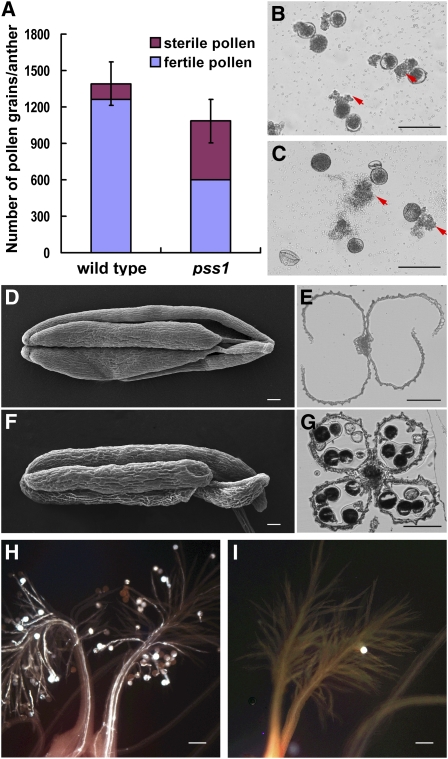Figure 3.
Fertility Analysis of the pss1 Mutant.
(A) Quantification of the total pollen grain numbers in the wild type and the pss1 mutant anthers. The pollen grain number of the mutant is ~78% of the wild type, and the fertile pollen grain number is ~40% of the wild type. Error bars indicate sd of total pollen grains from five independent samples.
(B) and (C) In vitro germination of the wild-type (B) and the pss1 mutant (C) pollen. The normal-shaped pollen in the mutant can germinate normally. Arrows indicate pollen tubes.
(D) to (G) Comparison of anther dehiscence between the wild type and the pss1 mutant. (D) and (F), scanning electron microscopy images of the wild-type (D) and mutant (F) anthers after anthesis; (E) and (G), cross sections of the wild-type (E) and mutant (G) anthers after anthesis. The mutant anther cannot dehisce normally.
(H) and (I) Comparison of pollen grain number on the stigma between the wild type (H) and the pss1 mutant (I). There are only few pollen grains on the mutant stigma.
Bars = 100 μm.

